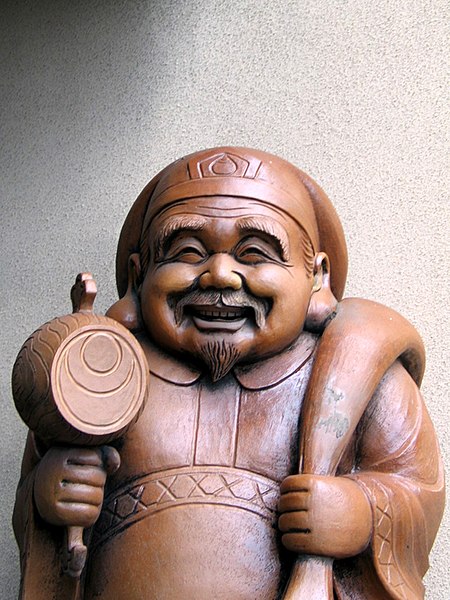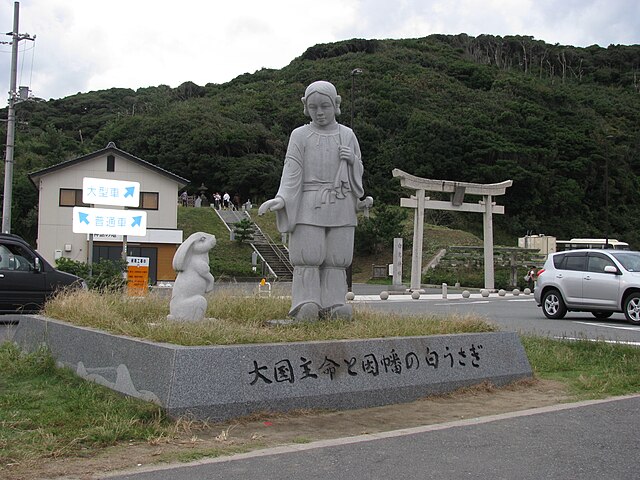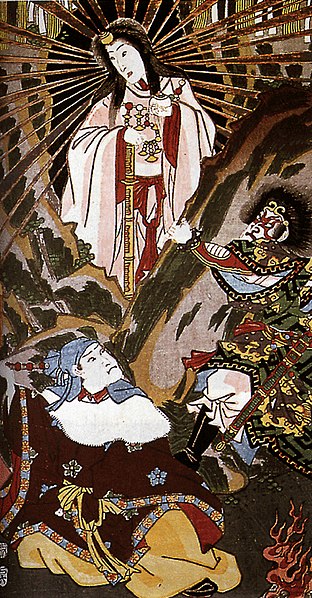Ōkuninushi, also known as Ō(a)namuchi or Ō(a)namochi among other variants, is a kami in Japanese mythology. He is one of the central deities in the cycle of myths recorded in the Kojiki and the Nihon Shoki alongside the sun goddess Amaterasu and her brother, the wild god Susanoo, who is reckoned to be either Ōkuninushi's distant ancestor or father. In these texts, Ōkuninushi (Ōnamuchi) is portrayed as the head of the kunitsukami, the gods of the earth, and the original ruler of the terrestrial world, named Ashihara no Nakatsukuni. When the heavenly deities (amatsukami) headed by Amaterasu demanded that he relinquish his rule over the land, Ōkuninushi agreed to their terms and withdrew into the unseen world, which was given to him to rule over in exchange. Amaterasu's grandson Ninigi then came down from heaven to govern Ashihara no Nakatsukuni and eventually became the ancestor of the Japanese imperial line.
Ōkuninushi (right) and Sukunabikona (left)
Ōkuninushi was popularly conflated with the deity Daikokuten (pictured)
Statue of the Hare of Inaba and Ōnamuji (Ōkuninushi) at Hakuto Shrine in Tottori, Tottori Prefecture
Ōnamuji being aided by a mouse
Kami are the deities, divinities, spirits, mythological, spiritual, or natural phenomena that are venerated in the Shinto religion. They can be elements of the landscape, forces of nature, beings and the qualities that these beings express, and/or the spirits of venerated dead people. Many kami are considered the ancient ancestors of entire clans. Traditionally, great leaders like the Emperor could be or became kami.
Amaterasu, one of the central kami in the Shinto faith
Itsukushima Shinto Shrine, Miyajima Island, Hiroshima Prefecture, Japan. This shrine is believed to be where the kami dwell, and hosts many ceremonies and festivals.






